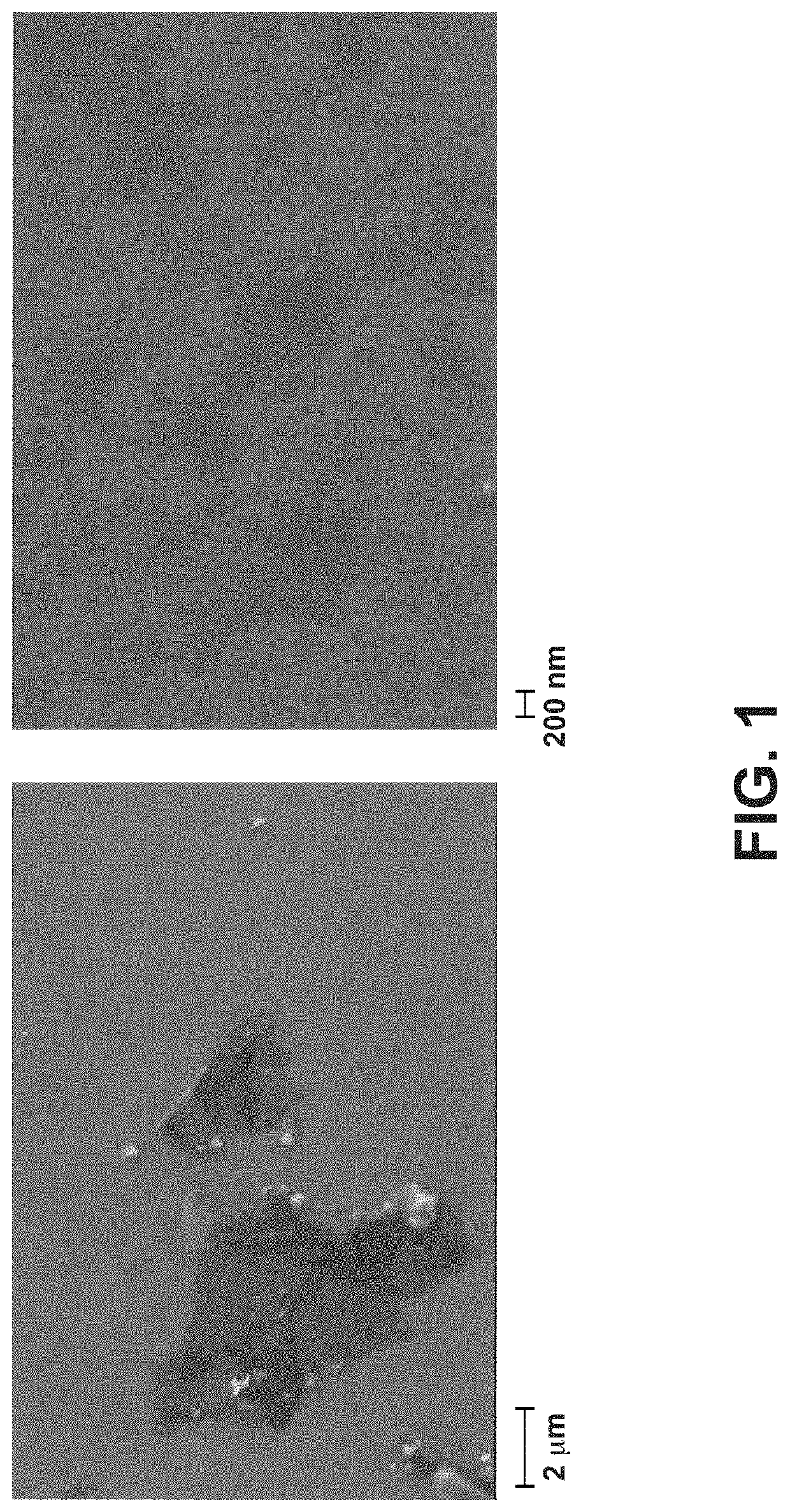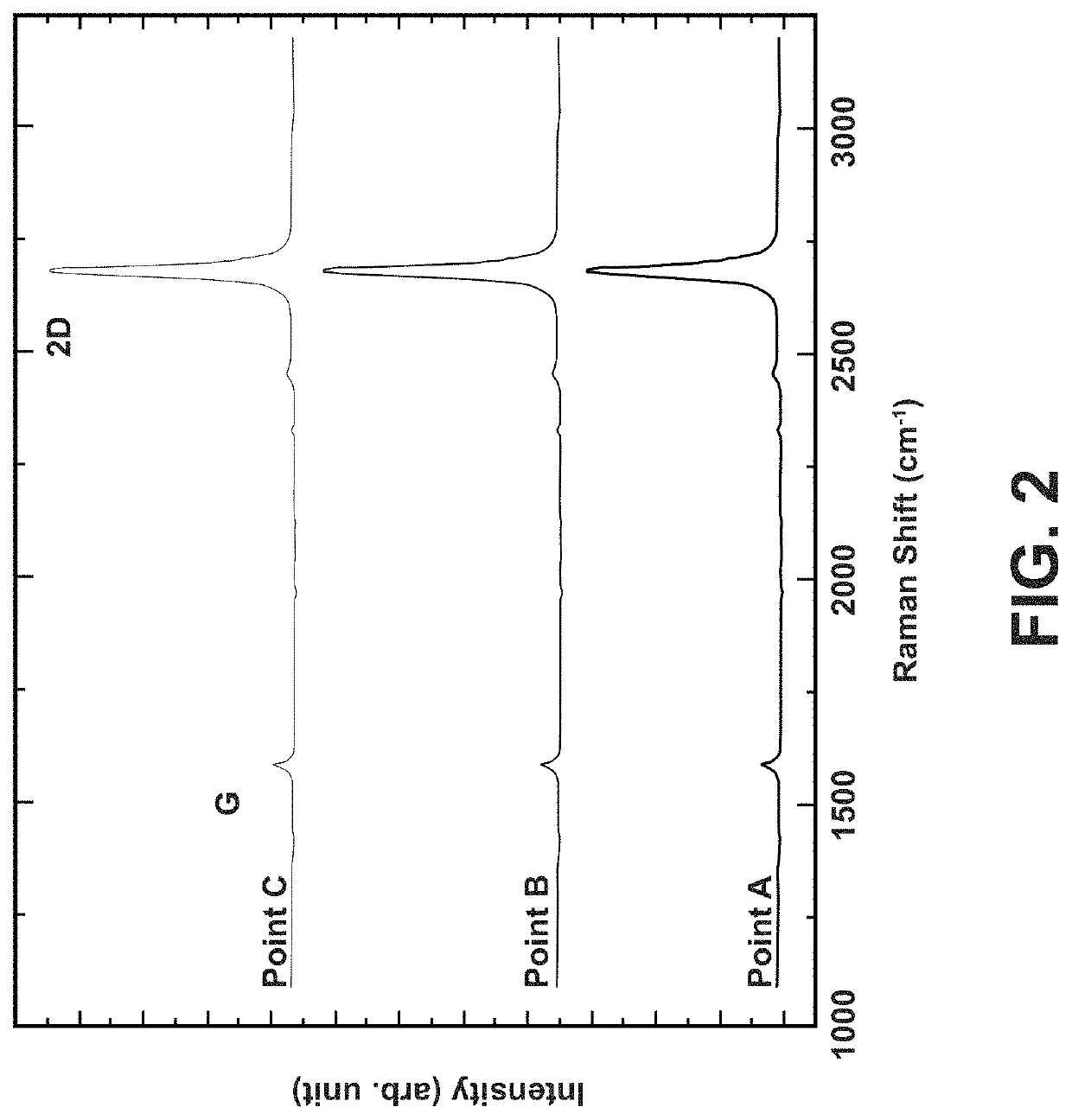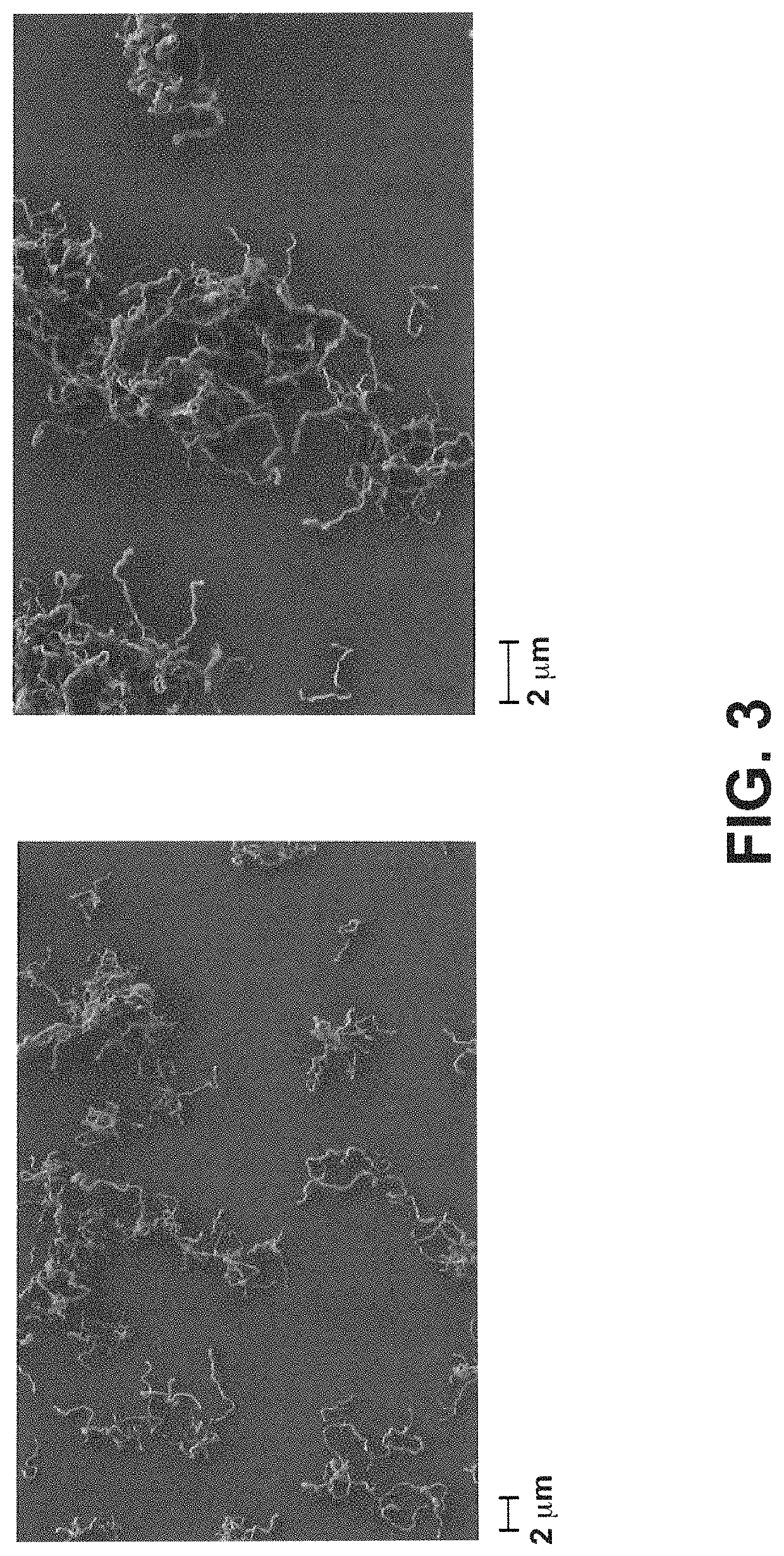Nanocomposite additives based on graphene sheets and silica nanofibers
a technology of silica nanofibers and graphene sheets, applied in the field of nanofibers made of graphene and silica for rubber articles, can solve the problems that composite tires lack the performance needed for breakthrough advances in fuel cost reduction, and achieve uniform temperature distribution, improved wear characteristics, and reduced hysteric losses
- Summary
- Abstract
- Description
- Claims
- Application Information
AI Technical Summary
Benefits of technology
Problems solved by technology
Method used
Image
Examples
example 1
[0028]Graphene nanoplatelets were prepared according to the following example, which is intended to be non-limiting.
[0029]A solution of dodecylamine (DA) in ethanol was added to a suspension of graphene oxide in ethanol (2 mg / ml). The mixture was refluxed at 90° C. with stirring for 20 hr and then filtrated with a membrane with an average pore size of 0.45 μm. To remove the physically absorbed DA, the filtrated powder was rinsed with ethanol three times. Finally, the mixture was dried in an oven at 80° C. for 24 hr.
example 2
[0030]Silica nanofibers were synthesized according to the following example, which is intended to be non-limiting.
[0031]Silica nanofibers (diameter<100 nm) (SEM micrographs of exemplary silica nanofibers are provided as FIG. 3) were fabricated by an electrospinning technique using a sol-gel precursor. The sol-gel precursor was prepared by hydrolysis of tetraethyl orthosilicate (TEOS) in a solution including polyvinyl pyrolidone (PVP, Mw=130,000 g / mol) dissolved in ethanol. PVP was dissolved in ethanol at 5 wt. % and stirred at 60° C. until it formed a uniform solution and 0.5 g of TEOS was then added into the PVP solution. After 20 min, 0.1 g of 2 M HCl was added into the solution as a catalyst and stirred for another 30 min and then cooled down to room temperature. The solution was electrospun at a constant flow rate of 25 μL / min at a high voltage of 18 kV. The PVP / silica nanofibers were collected on an aluminum foil collector kept at a distance of 15 cm from the needle tip. The re...
example 3
[0032]A styrene-butadiene rubber (SBR) composite was prepared according to the following example, which is intended to be non-limiting.
[0033]The SBR composite was prepared by solution blending. The prepared octylsilane modified ground silica nanofiber (15 wt. % of SBR) and dodecylamine modified graphene (4 wt % of SBR) were dispersed and exfoliated in toluene by ultrasonicator for 0.5 hr. The resulting suspension was added to an SBR solution in toluene. The mixture was homogenized using a shear mixer at 9,000 rpm at ambient temperature for 0.5 hr. The SBR composite was then obtained by coagulating in methanol and filtering. The precipitate was dried in a vacuum oven at 80° C. for 3 days.
[0034]SEM micrographs of graphene nanoplatelets subsequent to exfoliation in solution under high-shear mixing and ultrasonic agitation and representative of the graphene nanoplatelets used in this example are provided as FIG. 1. Moreover, Raman spectrographs taken at different points on a single grap...
PUM
| Property | Measurement | Unit |
|---|---|---|
| mean cross sectional diameter | aaaaa | aaaaa |
| mean diameter | aaaaa | aaaaa |
| mean diameter | aaaaa | aaaaa |
Abstract
Description
Claims
Application Information
 Login to View More
Login to View More - R&D Engineer
- R&D Manager
- IP Professional
- Industry Leading Data Capabilities
- Powerful AI technology
- Patent DNA Extraction
Browse by: Latest US Patents, China's latest patents, Technical Efficacy Thesaurus, Application Domain, Technology Topic, Popular Technical Reports.
© 2024 PatSnap. All rights reserved.Legal|Privacy policy|Modern Slavery Act Transparency Statement|Sitemap|About US| Contact US: help@patsnap.com










